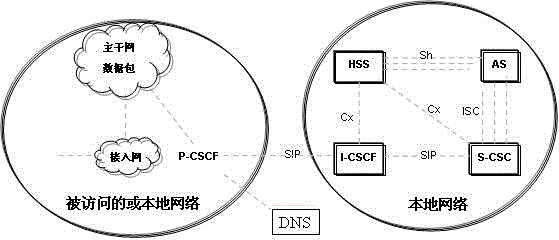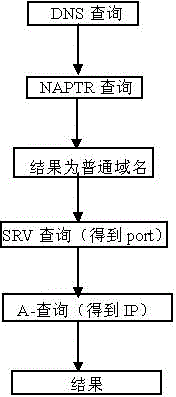Method for dynamically changing domain name service retrieving sequence
A domain name service and dynamic change technology, applied in the network field, can solve problems such as time-consuming, lower query efficiency, lower efficiency, etc., and achieve the effect of improving efficiency
- Summary
- Abstract
- Description
- Claims
- Application Information
AI Technical Summary
Problems solved by technology
Method used
Image
Examples
Embodiment Construction
[0032] see Figure 1 to Figure 11 As shown, the present invention dynamically adjusts the NAPTR record search. During the NAPTR record search process, a Weight field, a dynamic data detection function and a heartbeat detection function are first set. In the IMS core network, FQDN is the IMS core network For identifiable information, the IP address is used as the target address for transmission. If the IP address is not available, the FQDN final destination address is used for transmission. The weight Weight of IP is greater than that of FQDN, and the weight of FQDN is greater than that of ordinary The Weight value of the domain name, the specific steps are:
[0033] 1. The first query order should be to query IP first.
[0034] When the result obtained after NAPTR query is IP, since it can be used as the target address together with the default port 5060, it can be transmitted as the next hop without further analysis. Therefore, the SRV query and A-query are omitted, and the...
PUM
 Login to View More
Login to View More Abstract
Description
Claims
Application Information
 Login to View More
Login to View More - R&D
- Intellectual Property
- Life Sciences
- Materials
- Tech Scout
- Unparalleled Data Quality
- Higher Quality Content
- 60% Fewer Hallucinations
Browse by: Latest US Patents, China's latest patents, Technical Efficacy Thesaurus, Application Domain, Technology Topic, Popular Technical Reports.
© 2025 PatSnap. All rights reserved.Legal|Privacy policy|Modern Slavery Act Transparency Statement|Sitemap|About US| Contact US: help@patsnap.com



